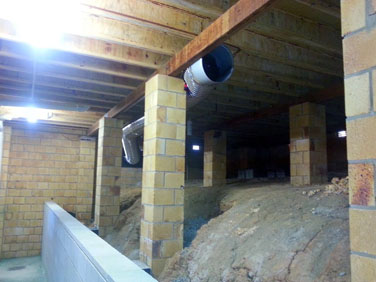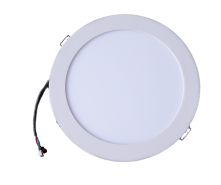Subfloor ventilation is crucial for maintaining a healthy and structurally sound home. Poor sub floor ventilation can lead to moisture build-up, mould growth, and even structural damage. For Australian homeowners, ensuring that your subfloor is properly ventilated is an important step in home maintenance and protecting your most valuable asset – your home. Here’s how you can improve your existing subfloor ventilation and find professional help.
How can homeowners improve their existing subfloor ventilation?
Improving your subfloor ventilation involves several steps:
- Inspect Existing Vents:
Check if your current vents are clear of obstructions. Over time, vents can get blocked by soil, debris, or even plants. Make sure they are clean and free flowing.
- Increase Ventilation Points:
If your home has limited vents, consider adding more. This increases the airflow, helping to reduce moisture build-up. Position vents strategically around your home to maximise cross-ventilation.
- Install Sub floor Ventilation Fans:
In areas with high humidity or poor natural airflow, installing subfloor ventilation fans can be effective. These fans help to actively remove damp air from beneath your house.
- Seal Gaps and Cracks:
Ensure there are no gaps or cracks in the subfloor that can allow moisture to seep in. Sealing these will help to maintain a dry environment under your home.
How can homeowners find professional help to assess their subfloor?
Choosing the right professional is essential for a thorough subfloor assessment and repair. At Solar Whiz, we offer specialised services that set us apart:
- Expertise in Subfloor Ventilation:
Our team has extensive experience in dealing with subfloor ventilation issues. We understand the unique challenges that Australian homes face and provide tailored solutions.
- Advanced Technology:
We use the latest technology to assess your subfloor ventilation needs. Our innovative Solar Whiz sub floor ventilation systems are designed to improve airflow and reduce moisture effectively.
- Comprehensive Assessments:
Our professionals conduct detailed assessments to identify the root causes of poor ventilation. We don’t just treat the symptoms; we address the underlying problems to provide long-lasting solutions.
- Customer-Focused Service:
At Solar Whiz, we prioritise our customers’ needs. We offer personalised consultations, transparent pricing, and reliable aftercare services to ensure you’re satisfied with our work.
- Environmentally Friendly Solutions:
Our ventilation systems are powered by solar energy, making them eco-friendly and cost-effective. By choosing Solar Whiz, you’re not only improving your home but also contributing to a sustainable future.
How long does a typical subfloor assessment and repair take?
The duration of a subfloor assessment and repair can vary based on several factors:
- Size of the Subfloor:
Larger subfloors naturally take longer to assess and repair.
- Extent of Damage:
If there is significant damage or moisture build-up, it might take more time to rectify the issues.
- Accessibility:
The ease of access to your subfloor can impact the time required. Hard-to-reach areas may prolong the process.
Generally, a basic assessment might take a few hours, while extensive repairs can range from a couple of days to a week or more.
Are there any temporary measures homeowners can take while waiting for professional repairs?
While waiting for professional repairs, there are a few temporary measures you can take:
- Use Temporary Fans:
Place fans in the affected areas to improve airflow and reduce moisture levels.
- Monitor Moisture Levels:
Use a hygrometer to keep an eye on moisture levels in your subfloor. Keeping these levels in check can prevent further damage.
- Clear Obstructions:
Ensure that existing vents are clear of any debris or blockages to allow maximum airflow.
- Limit Water Usage:
Reduce activities that increase moisture, such as using less water for cleaning and ensuring that external water sources (like garden hoses) are not leaking near your home’s foundation.
What are the risks of delaying subfloor repairs?
Delaying subfloor repairs can lead to several significant risks:
- Structural Damage:
Prolonged moisture exposure can weaken the structural integrity of your home, leading to costly repairs.
- Health Issues:
Mould and mildew growth in your subfloor can cause respiratory issues and other health problems for you and your family.
- Pest Infestations:
Damp environments are attractive to pests such as termites and rodents, which can cause further damage to your property.
- Decreased Property Value:
A damaged subfloor can reduce the overall value of your home, making it less attractive to potential buyers.
What are some preventive measures to avoid subfloor damage in the first place?
Prevention is always better than cure. Here are some measures to avoid subfloor damage:
- Regular Inspections:
Conduct regular inspections of your subfloor to catch any issues early before they become major problems.
- Maintain Ventilation:
Ensure that your subfloor vents are always clear and functioning properly. Regular maintenance can prevent blockages.
- Control Moisture Levels:
Use dehumidifiers if necessary and ensure good drainage around your home to keep moisture levels in check.
- Install a Vapour Barrier:
A vapour barrier can prevent ground moisture from rising into the subfloor, keeping it dry and protected.
By taking these steps, you can improve your subfloor ventilation, find professional help, and prevent future damage. Proper maintenance and timely repairs will keep your home safe, healthy, and comfortable for years to come.




